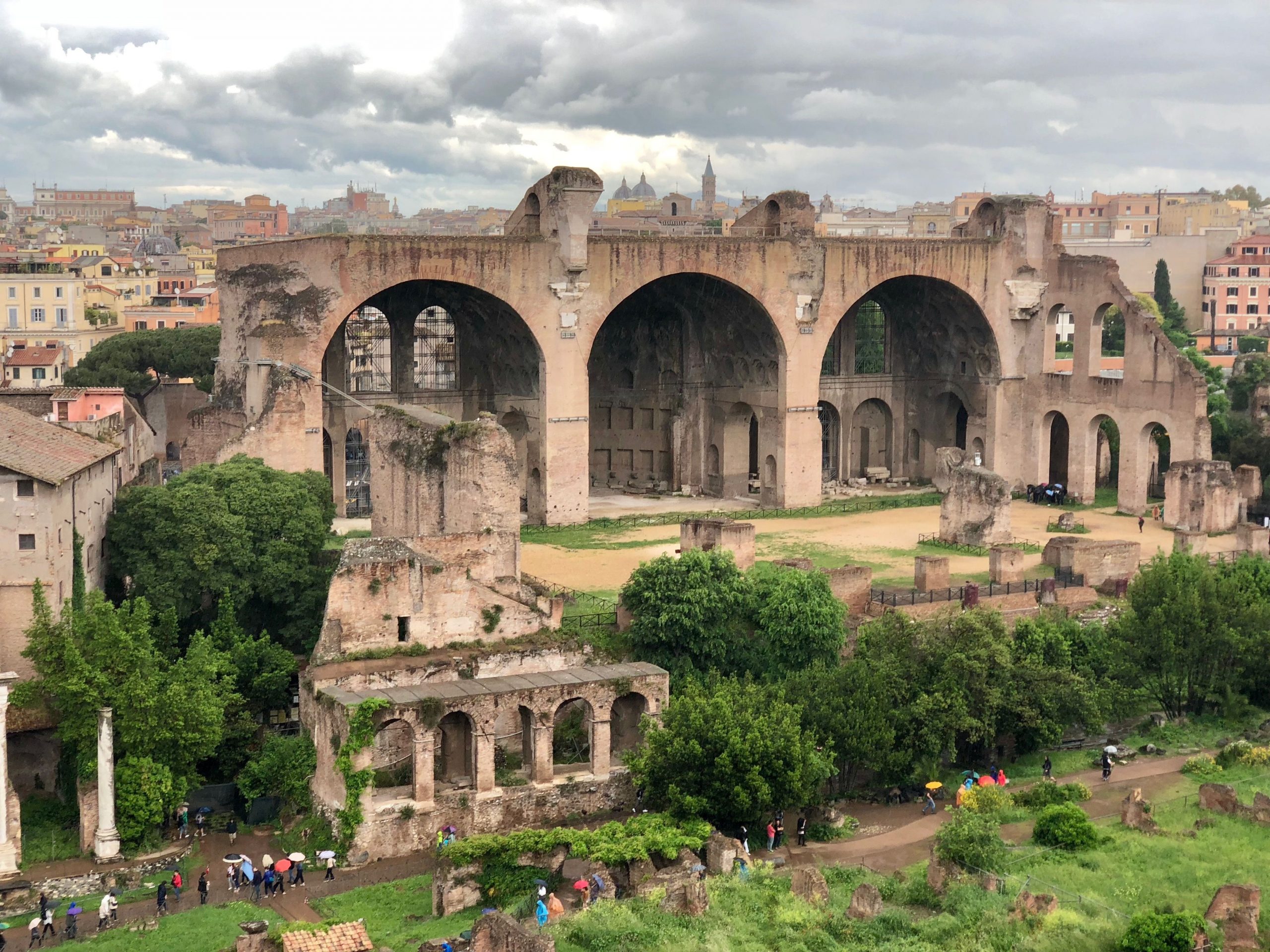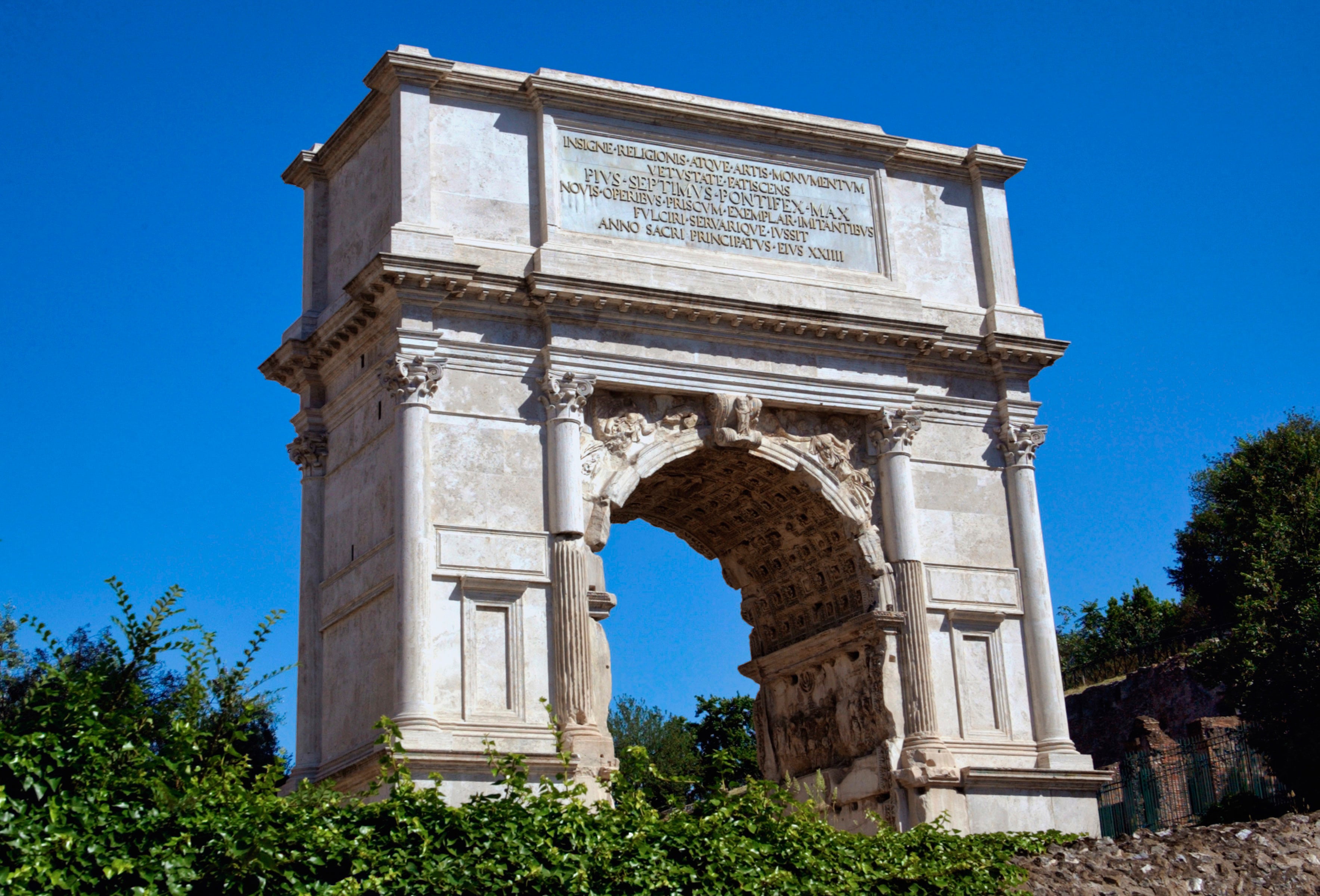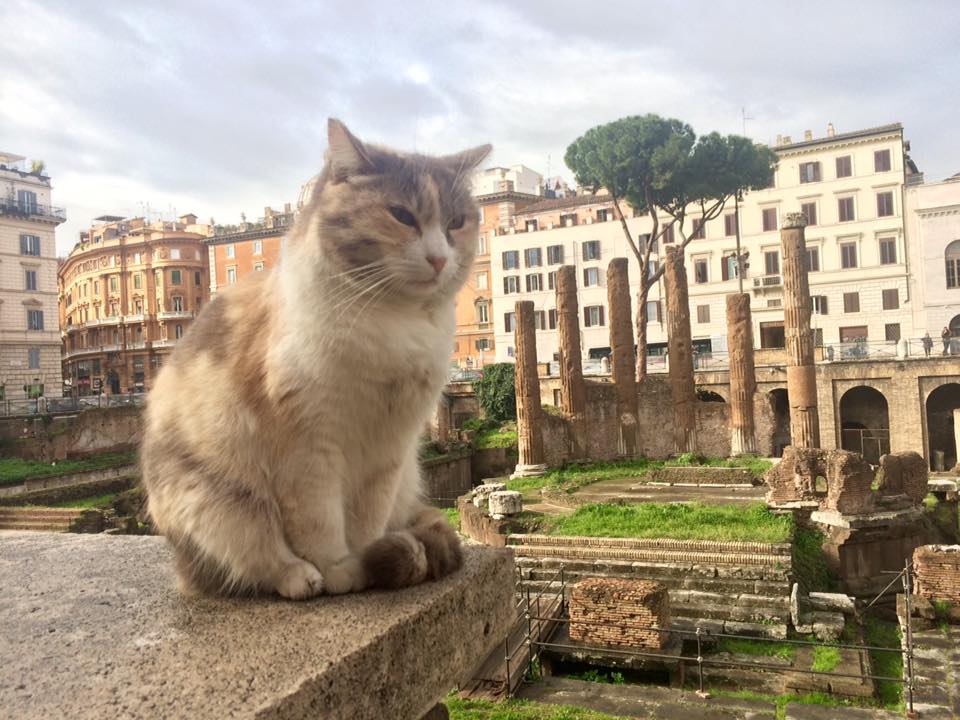Temple of Venus and Roma
What remains of ancient Rome’s largest-known temple, the Temple of Venus and Rome, stands next to the Colosseum, one of the most impressive remains on the Roman Forum. Built by the Emperor Hadrian and dedicated to Venus and Roma, it stood atop a high platform where the entrance to Nero’s Domus Aurea once stood. In order to build the temple, Hadrian had to move the 30m colossus of Nero to a base next to the Flavian amphitheatre. This magnificent back to back double temple was the first to glorify the goddess Roma in her own right.
The emperor Hadrian designed it himself (he was an amateur architect) who had a passion for grand architecture built and restored monuments wherever he went. Taking the place of the monumental entrance of Nero’s palace, the temple was a Greek style temple with a low stepped podium with ten columns at each end and twenty columns down the sides. The 60ft Corinthian column of white proconnesian marble would make the temple roof level with the bell tower of S. Francesca Romana – towering above the Colosseum . Set in a paved square it was flanked by a colonnaded portico of grey granite columns, the precinct covers an area of 1.5 acres and was essentially Hadrian’s Forum
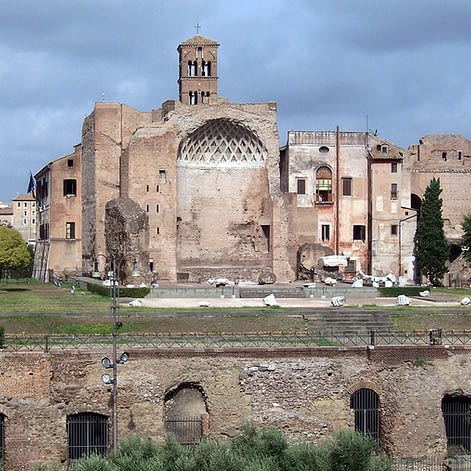
, providing a monumental route between the old Roman Forum valley and the amphitheatre, the colonnA.D.es along the sides ended in steps which led down to the colosseum level.
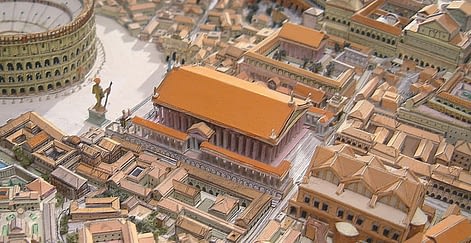
The double temple consisted of two main chambers housing its own cult statue; seated back to back on thrones, with Roma holding a spear and an image of victory facing west over the Roman Forum and Venus holding a spear and a cupid faced the Colosseum to the east. The entrance to each chamber was lined with four columns and the entire temple was bordered with colonnaded entrances. Construction began in 121 A.D.; the temple was officially inaugurated in 135 A.D. What we see today is mostly the restoration by the emperor Maxentius after a fire in 307 A.D, he changed the style slightly and the colour scheme adding porphyry columns and veneer. The floor was paved in marble in geometric patterns much like the Pantheon. The eastern chamber,
visible from the piazza of the Colosseum, still retains the elegant apse and original columns that were unearthed and put back in place by Mussolini.
The temple honoured Roma Aeterna (Eternal Rome) protector of the state and the city and Venus Felix a previously unknown Goddess of fertility and prosperity. In 176 A.D. an altar was erected at which all newly married couples were expected to sacrifice.
These newly glorified deities represented the golden age of Rome beginning with Trajan which stressed the power of Rome and the Empire rather than the emperors.
LATE ANTIQUITY
It remained one of the most enduring of Rome’s pagan temples frequented for its festival to the birthday of Rome on 21st April, even by Christians in the 5th century. In the 7th century the bronze was removed from the roof and in the 8th century the temple of Roma side was converted into a church today called S Francesca Romana. Today the Temple of Venus and Rome is one of the most impressive ruins in the Roman Forum. Its huge dimensions, height, and location opposite the Colosseum have seen it become a stage for popes, opera singers, orchestras and a fabulous party for the designer Valentino’s 75th birthday. A view of the temple from the Oppian hill as sunset falls is one of Rome’s most magical experiences.
